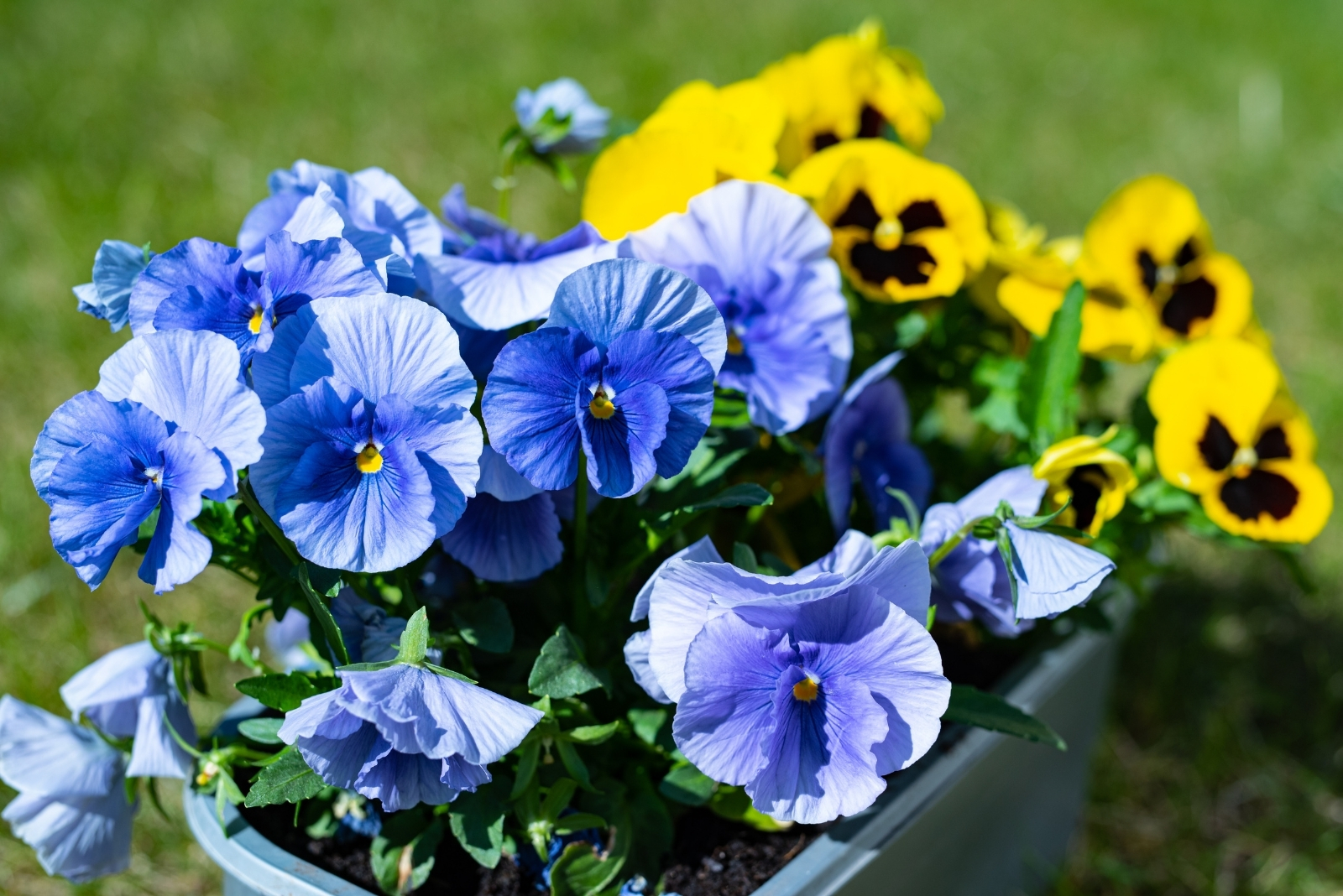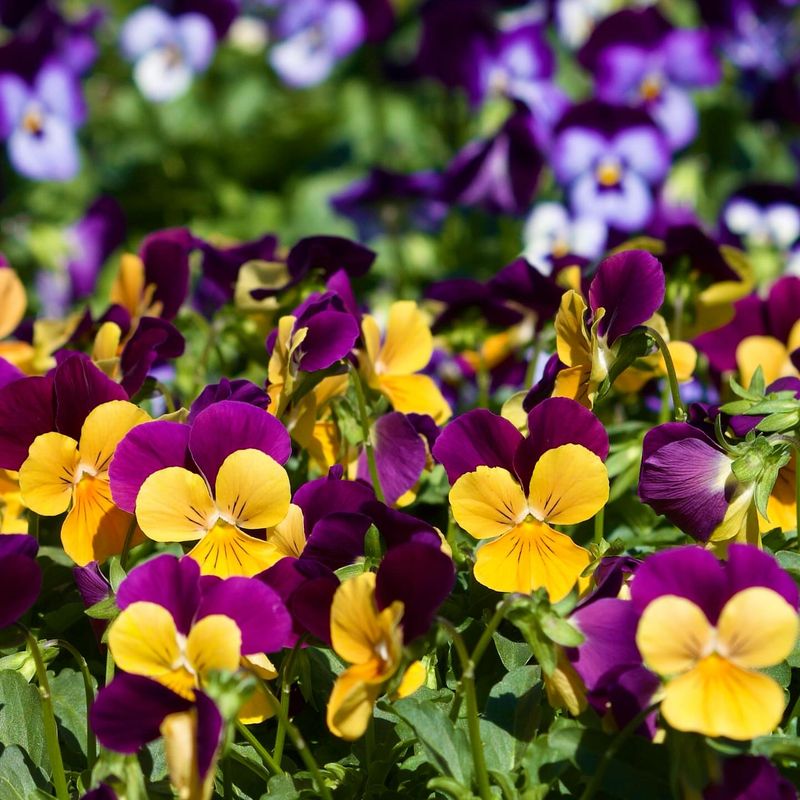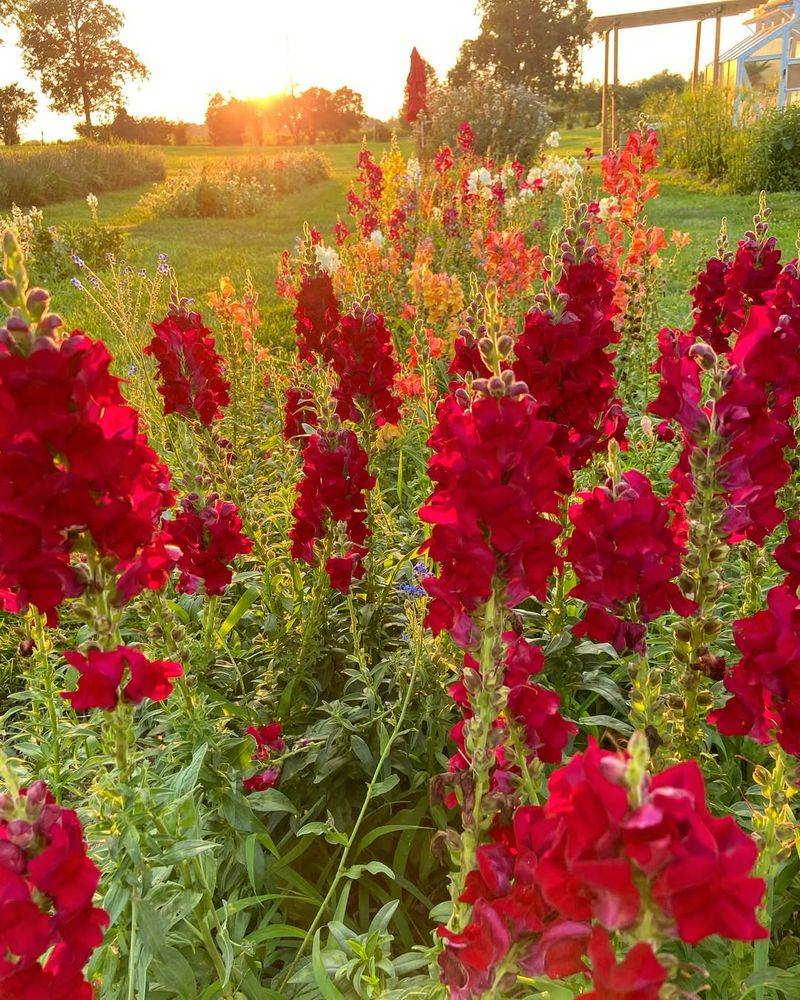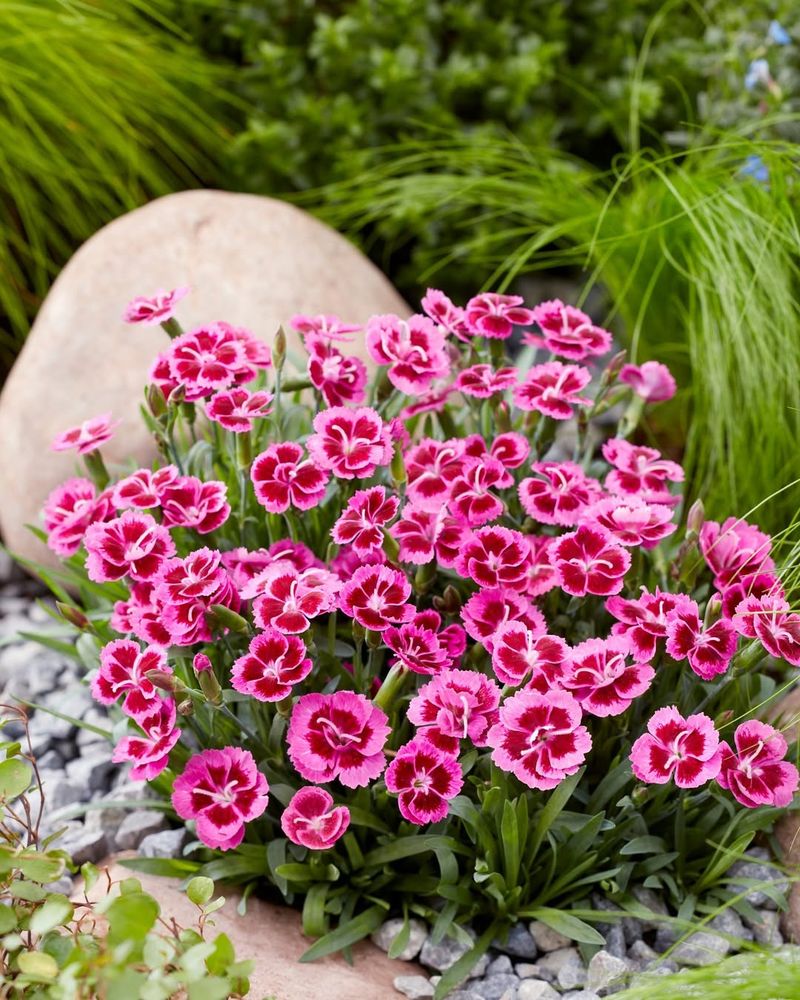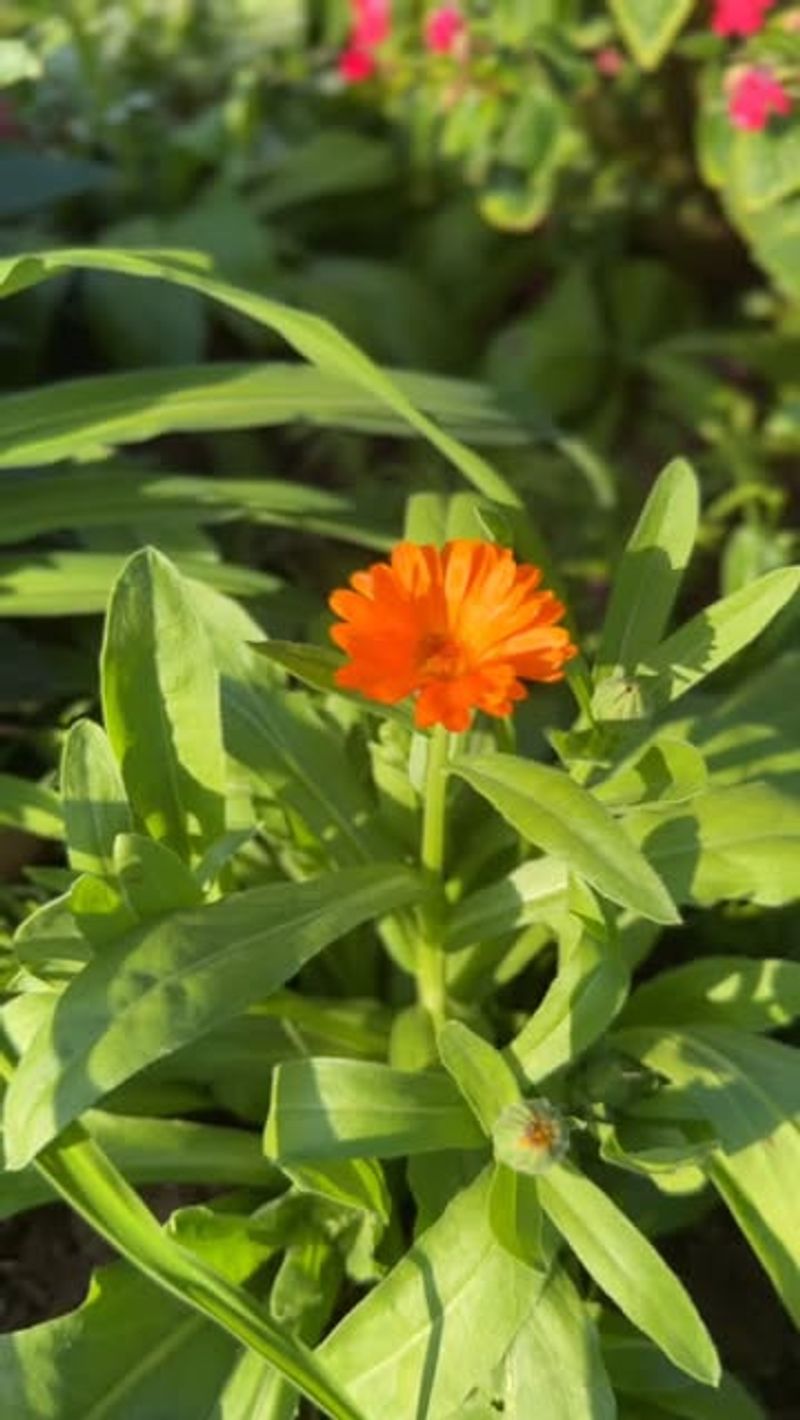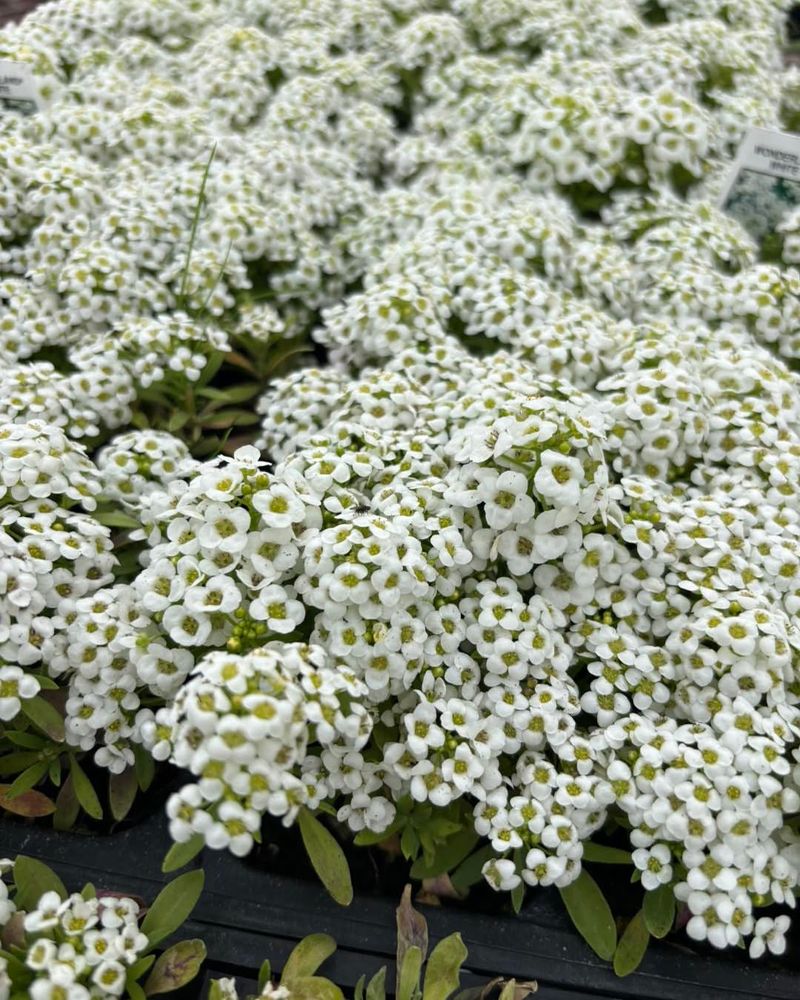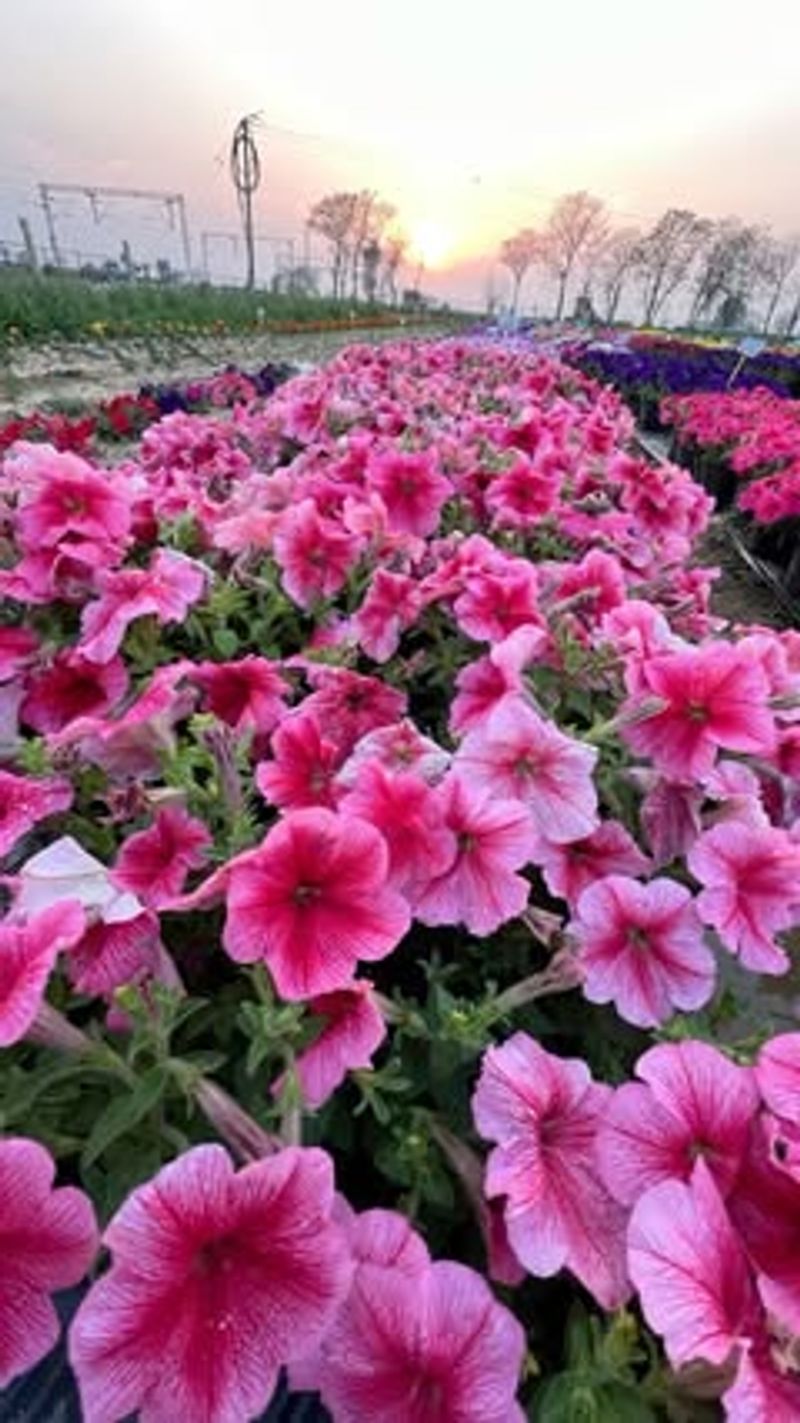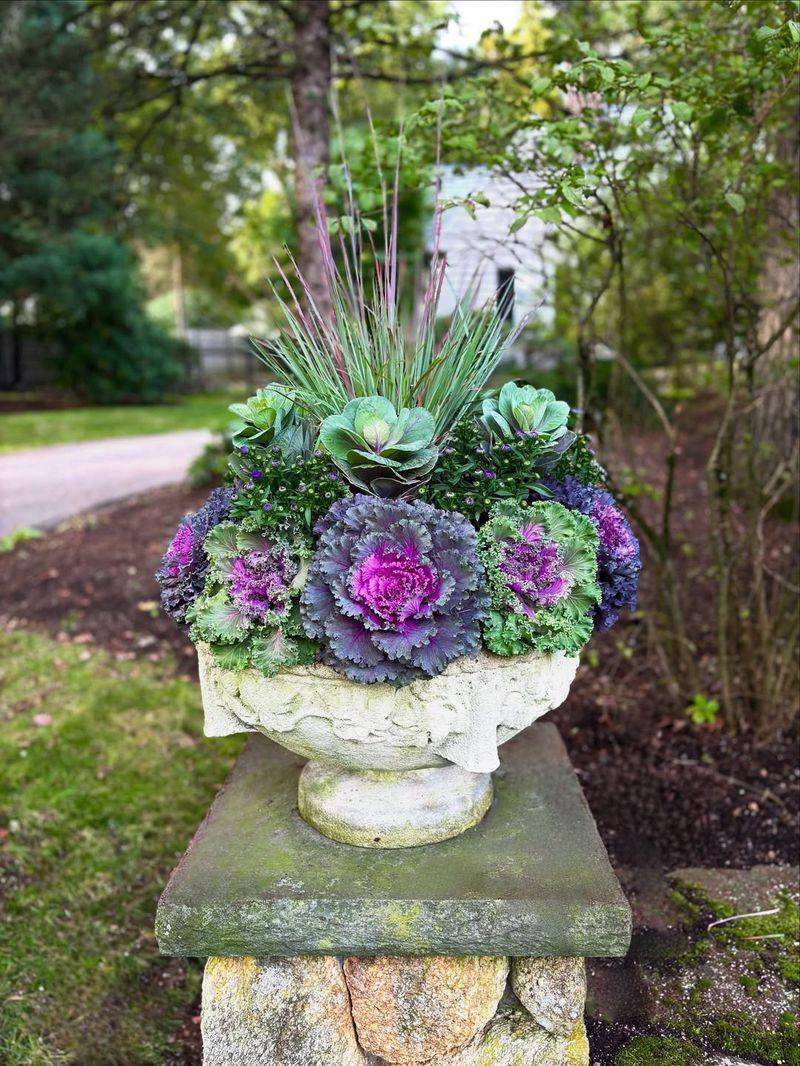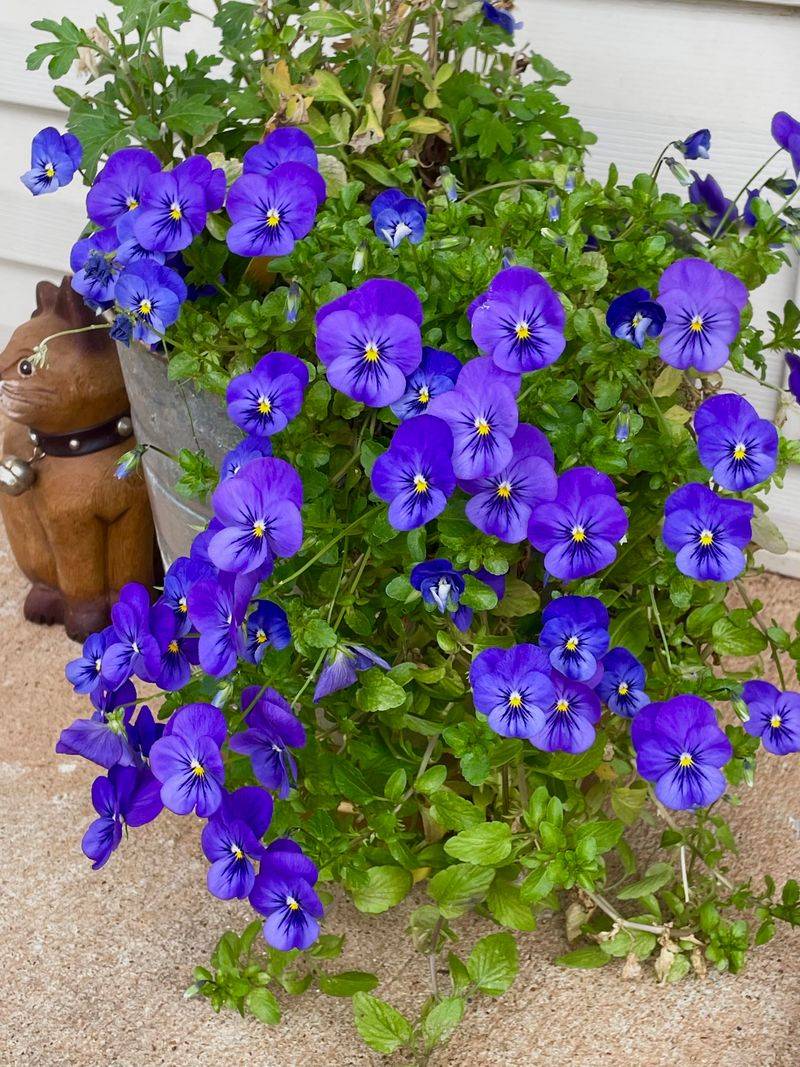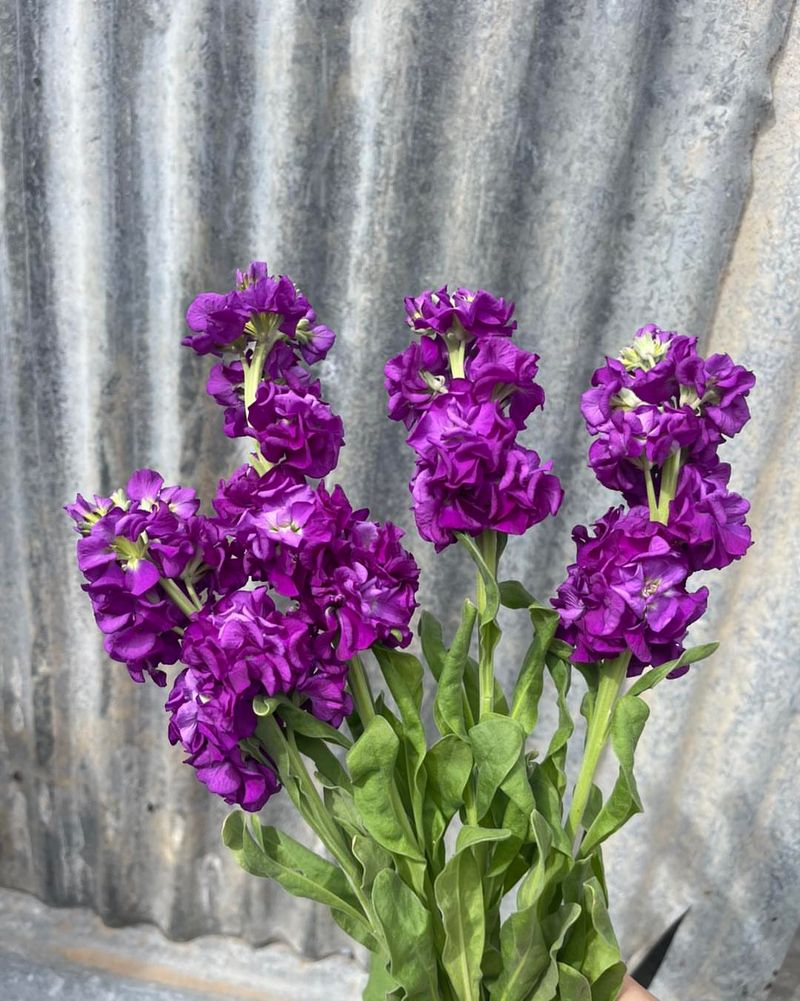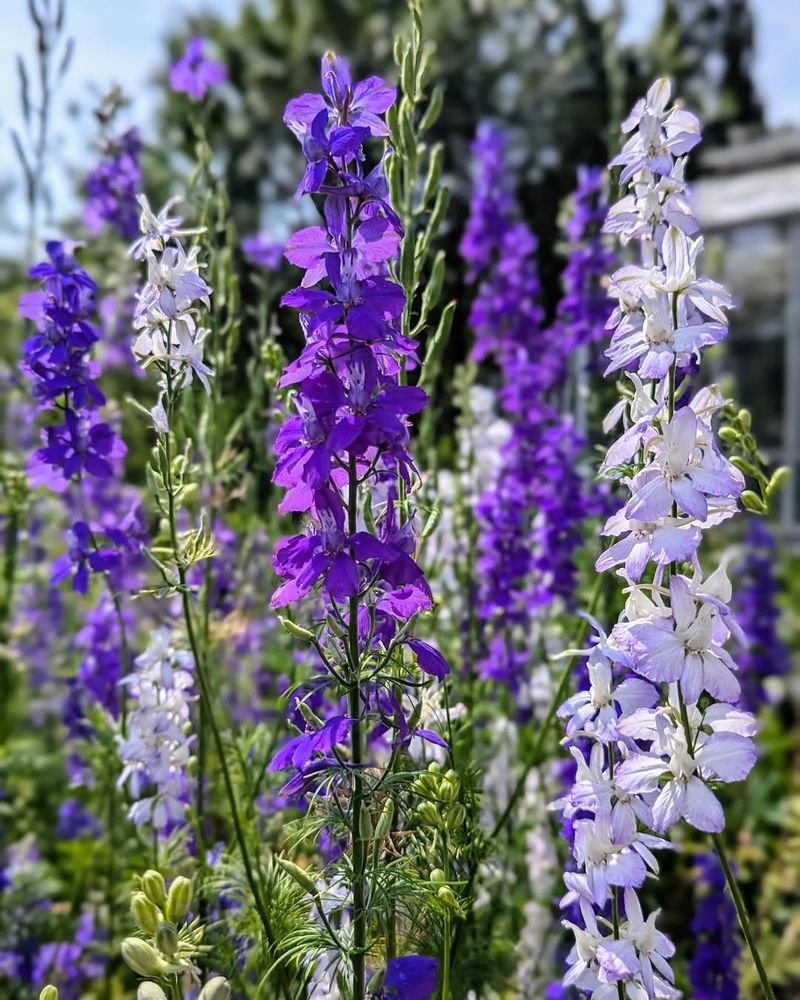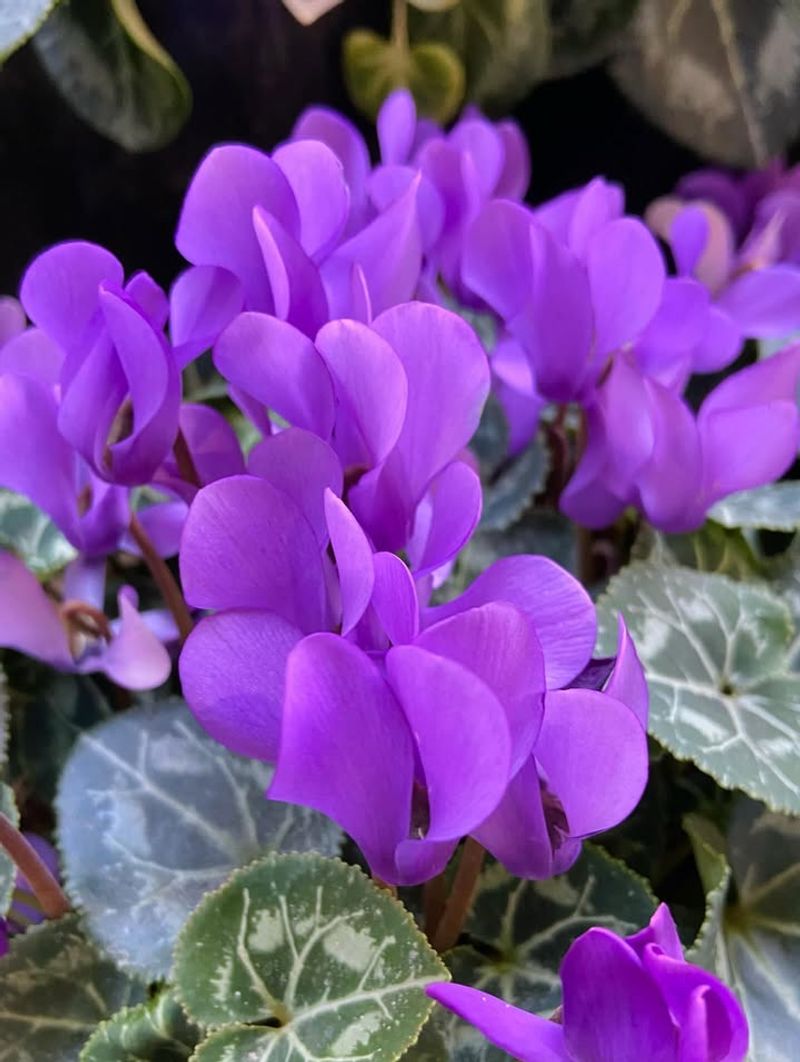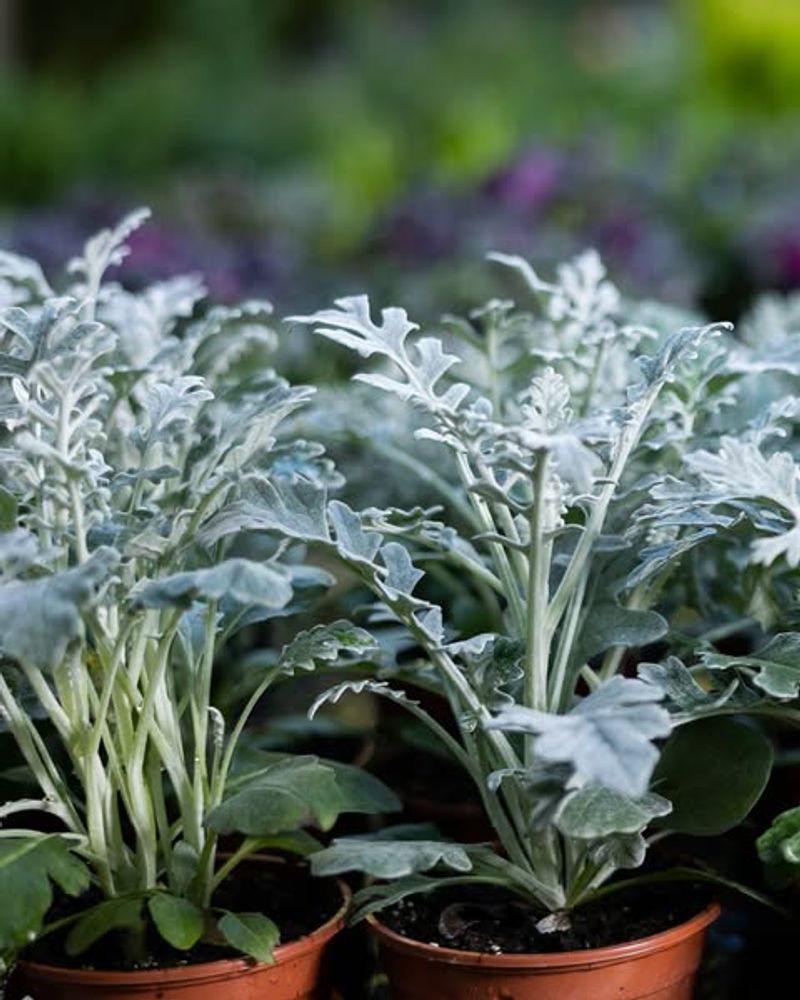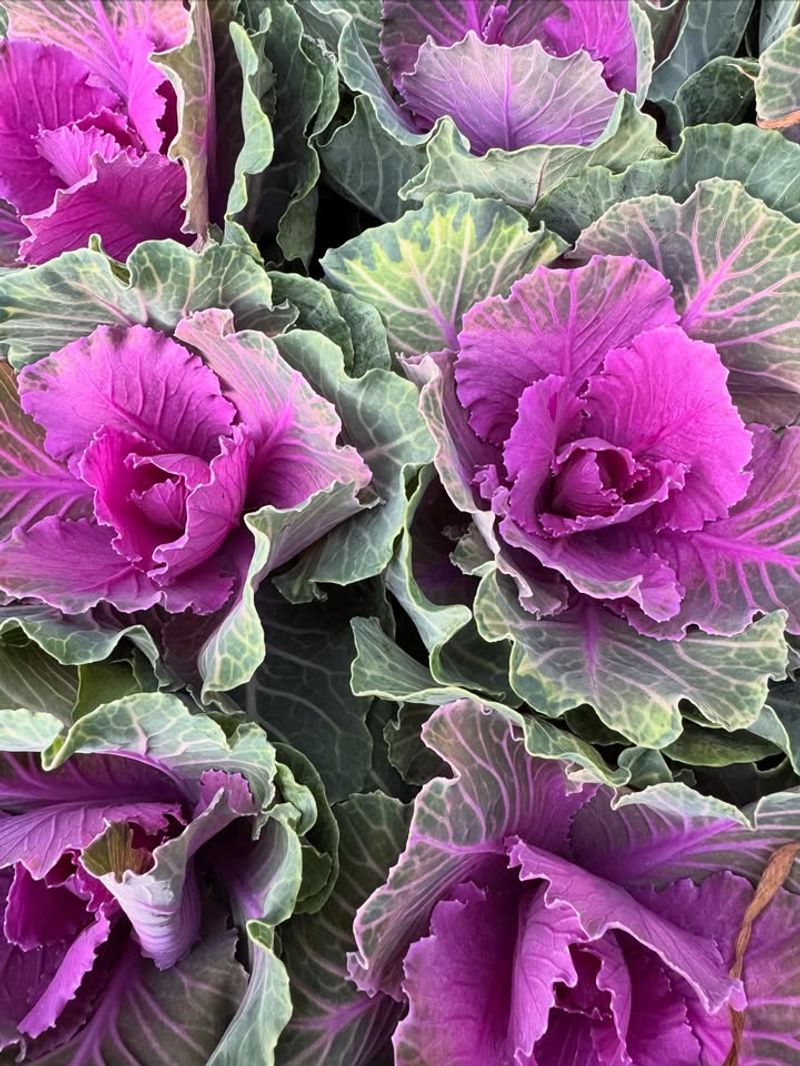Texas gardens have a unique rhythm, and some flowers respond beautifully to October planting. Fast-blooming varieties reward you with color before frost hits.
They brighten spaces and keep your beds lively during the cooler months. Timing your planting can make a huge difference in your fall garden.
1. Pansies
Cool weather brings out the best in pansies, making them stars of the Texas fall garden. Plant them in October and you’ll see cheerful faces blooming within just two to three weeks.
Their vibrant colors range from deep purples to sunny yellows, brightening up flower beds and containers alike. Pansies handle light frosts with ease, continuing to bloom even when temperatures dip.
Across Texas, gardeners love how these hardy flowers keep producing blooms well into spring with minimal care required.
2. Snapdragons
Standing tall with spikes of colorful blooms, snapdragons add vertical interest to any Texas garden. October planting gives them time to settle in before producing flowers in about four to five weeks.
Kids especially love squeezing the dragon-shaped flowers to make them snap open and closed. Available in nearly every color imaginable, they work beautifully as cut flowers too.
Texas gardeners appreciate how snapdragons tolerate both sun and partial shade, making them versatile choices for various garden spots throughout the state.
3. Dianthus
With a spicy, clove-like fragrance, dianthus brings both beauty and scent to Texas gardens. Often called pinks, these flowers bloom surprisingly fast when planted during October’s mild weather.
Expect to see fringed petals appearing within three to four weeks of planting. Their compact growth makes them perfect for edging walkways or filling gaps in flower beds.
Many Texas gardeners choose dianthus for its drought tolerance once established, requiring less water than other flowering plants while still delivering consistent blooms.
4. Calendula
Bright orange and yellow calendula flowers bring sunshine to Texas gardens even on cloudy days. Sometimes called pot marigold, this cheerful flower starts blooming just three weeks after October planting.
Beyond their beauty, calendula petals are edible and often used in salads or teas. They’re incredibly easy to grow from seed, making them budget-friendly options for beginning gardeners.
Throughout Texas, calendula thrives in cooler months, producing more flowers as temperatures drop while other plants slow down their growth.
5. Alyssum
Cascading masses of tiny flowers make sweet alyssum a favorite for Texas gardeners seeking quick results. Plant these delicate-looking but tough flowers in October and blooms appear within two weeks.
Their honey-like fragrance attracts beneficial insects while creating lovely ground cover or container spills. White, purple, and pink varieties offer color options for any garden design.
Across Texas landscapes, alyssum fills spaces between larger plants beautifully, softening edges and adding texture with minimal effort or maintenance required from busy gardeners.
6. Petunias
Few flowers deliver color as reliably as petunias do in Texas gardens. October plantings establish quickly, with blooms appearing in about three weeks when temperatures cool down nicely.
Wave and trailing varieties work wonderfully in hanging baskets, spilling over edges with continuous flowers. Regular deadheading keeps them blooming prolifically through winter and into spring.
Texas gardeners find petunias particularly rewarding because they bounce back from light freezes and keep producing flowers during mild winter stretches throughout the state.
7. Ornamental Kale
More vegetable than traditional flower, ornamental kale creates stunning rosettes of purple, pink, and white leaves. Cold weather actually intensifies their colors, making October perfect for planting in Texas.
Within two to three weeks, the colorful centers develop fully, creating focal points in beds and containers. Unlike regular kale, these varieties are bred specifically for visual appeal.
Many Texas gardeners use ornamental kale as living centerpieces or border plants, enjoying how they remain attractive even when other flowers fade during cold snaps.
8. Violas
Smaller cousins of pansies, violas pack plenty of charm into compact plants. October planting in Texas means flowers appear within two to three weeks, creating carpets of color.
Their delicate appearance belies their toughness against cold weather and light frost. Violas self-seed readily, often returning year after year without replanting.
Around Texas, these little flowers work beautifully in rock gardens, between stepping stones, or massed together in beds where their continuous blooming habit keeps gardens looking fresh all season long.
9. Stock
Gardeners who love fragrance should definitely plant stock flowers in their Texas gardens during October. Their spicy-sweet scent fills the air while tall spikes of ruffled blooms appear within four to five weeks.
Cut flowers last exceptionally long in vases, making them popular choices for arrangements. Colors range from soft pastels to deep purples and reds.
Throughout Texas, stock performs best during cooler months, with October planting allowing roots to establish before the flowering show begins in late fall and continues through winter.
10. Larkspur
Towering spires of larkspur bring cottage garden charm to Texas landscapes. Plant seeds directly in the ground during October and watch them germinate quickly in cool soil.
By late winter, you’ll have impressive flower spikes reaching several feet tall in shades of blue, pink, and white. Larkspur actually needs cold weather to bloom well.
Many Texas gardeners treat larkspur as a cool-season annual, letting plants self-seed for future years while enjoying their dramatic vertical presence that attracts hummingbirds and butterflies throughout blooming periods.
11. Cyclamen
Elegant butterfly-shaped flowers dancing above marbled foliage make cyclamen special additions to shaded Texas gardens. October planting allows these beauties to bloom within three to four weeks.
Unlike many flowers, cyclamen actually prefer shade and cooler temperatures, making them perfect for difficult spots. Their upswept petals come in reds, pinks, and whites.
Across Texas, cyclamen thrive in containers on covered patios or under trees where other flowers struggle, continuing to produce blooms throughout winter when properly protected from hard freezes.
12. Dusty Miller
While technically grown for silvery foliage rather than showy flowers, dusty miller deserves mention for adding contrast to Texas fall plantings. October is ideal for establishing these plants before winter.
Their soft, fuzzy silver leaves brighten dark corners and complement colorful flowering companions beautifully. Small yellow flowers eventually appear but the foliage remains the main attraction.
Texas gardeners value dusty miller as a drought-tolerant filler plant that handles heat and cold equally well, providing year-round interest with virtually no maintenance beyond occasional trimming.
13. Flowering Cabbage
Similar to ornamental kale but with smoother leaves, flowering cabbage creates bold statements in Texas gardens. Plant in October and watch the colorful centers develop within three weeks as temperatures cool.
These plants grow quite large, making impressive specimen plants in containers or garden beds. Purple, pink, and cream colors intensify with each cold snap.
Throughout Texas, flowering cabbage remains attractive well into winter, tolerating frosts that would damage most other plants while providing consistent color when gardens need it most during shorter, darker days.

